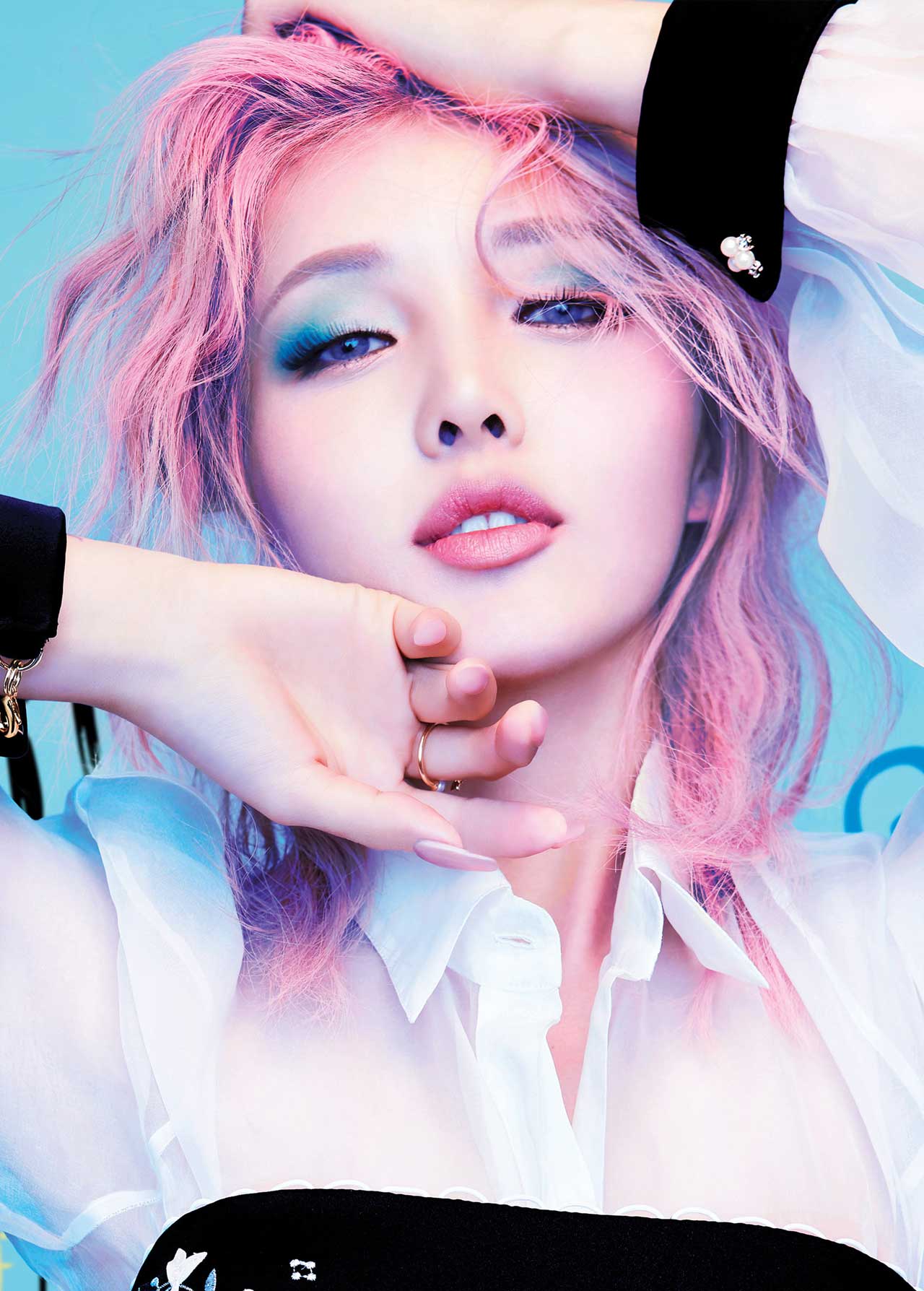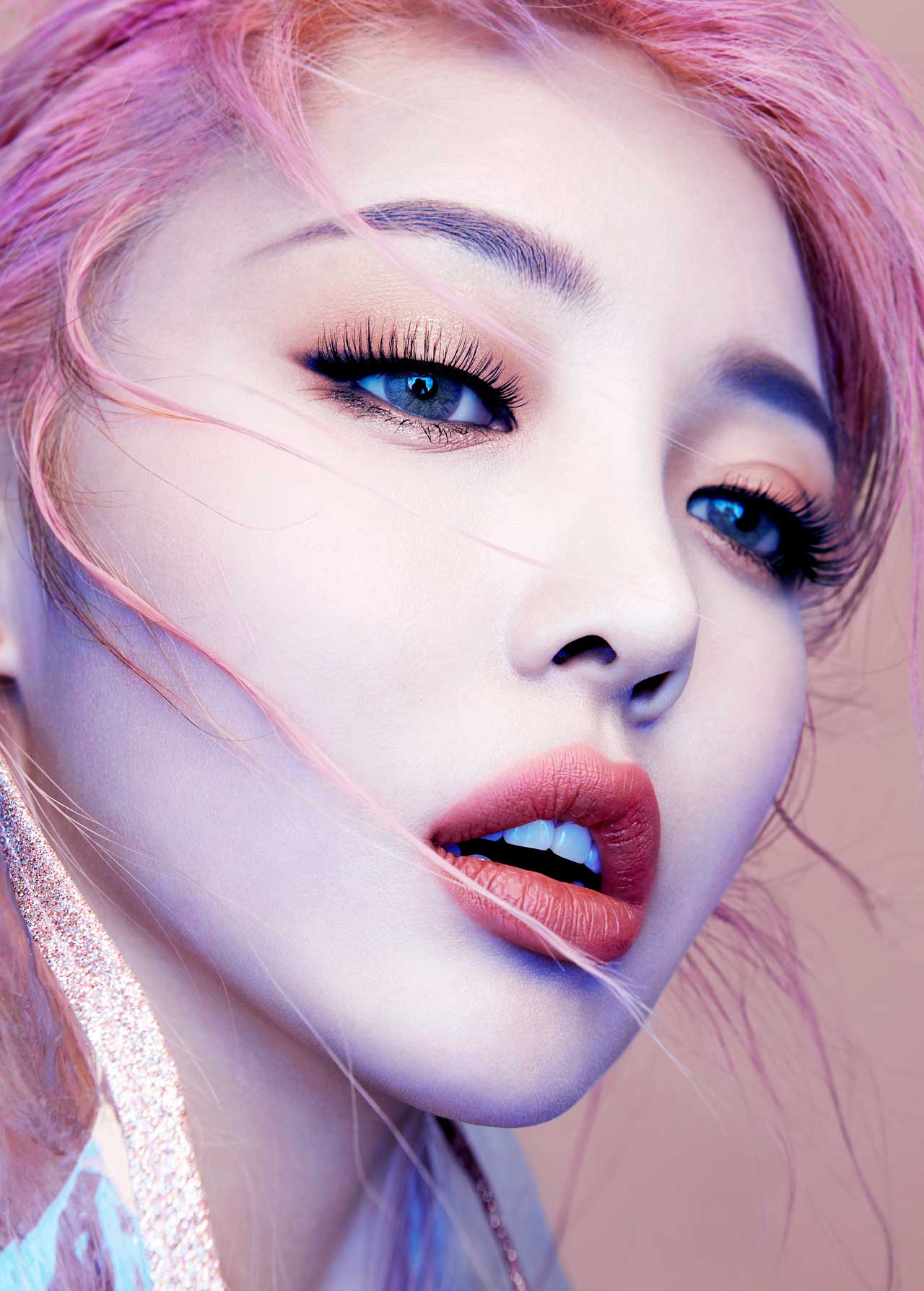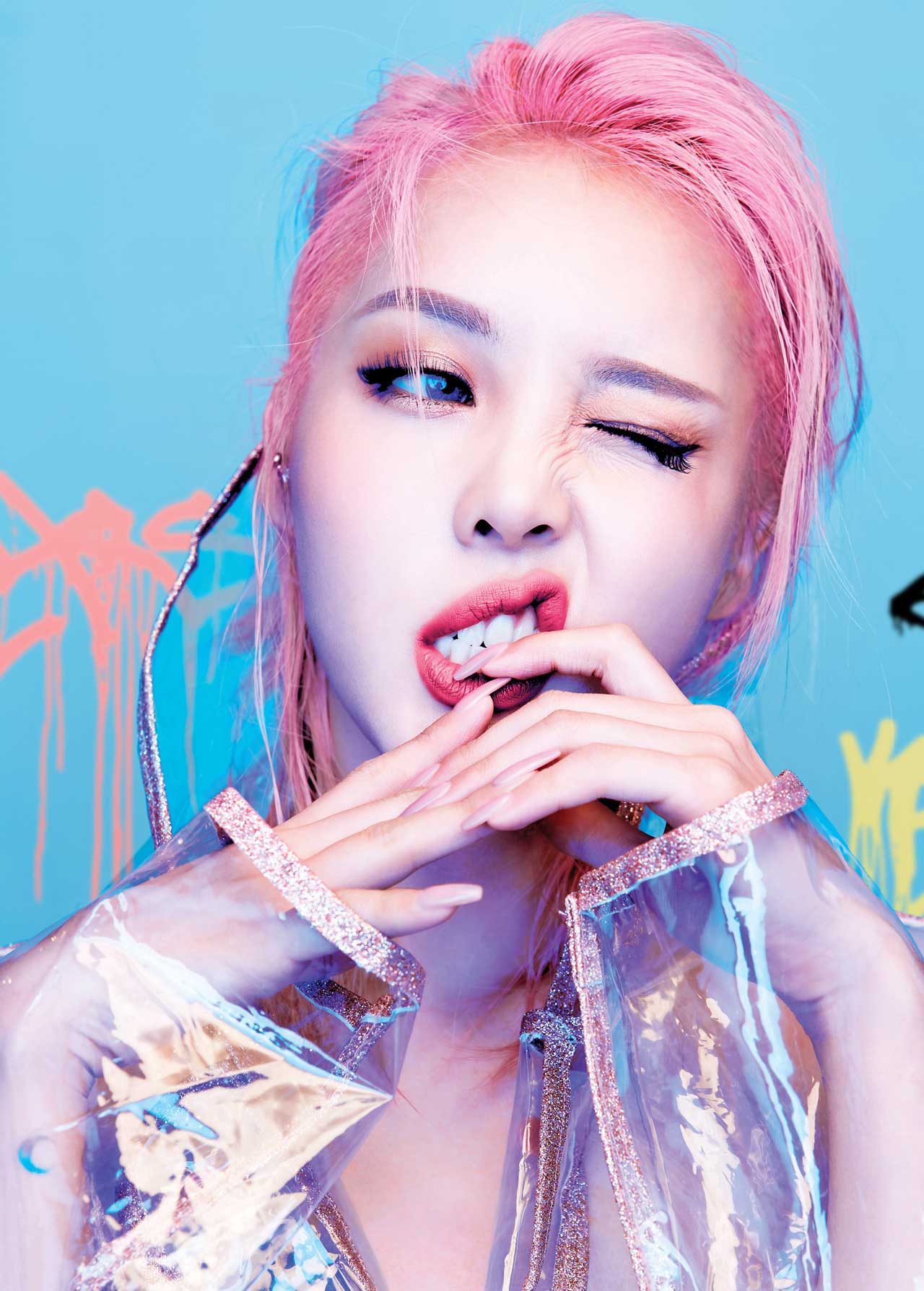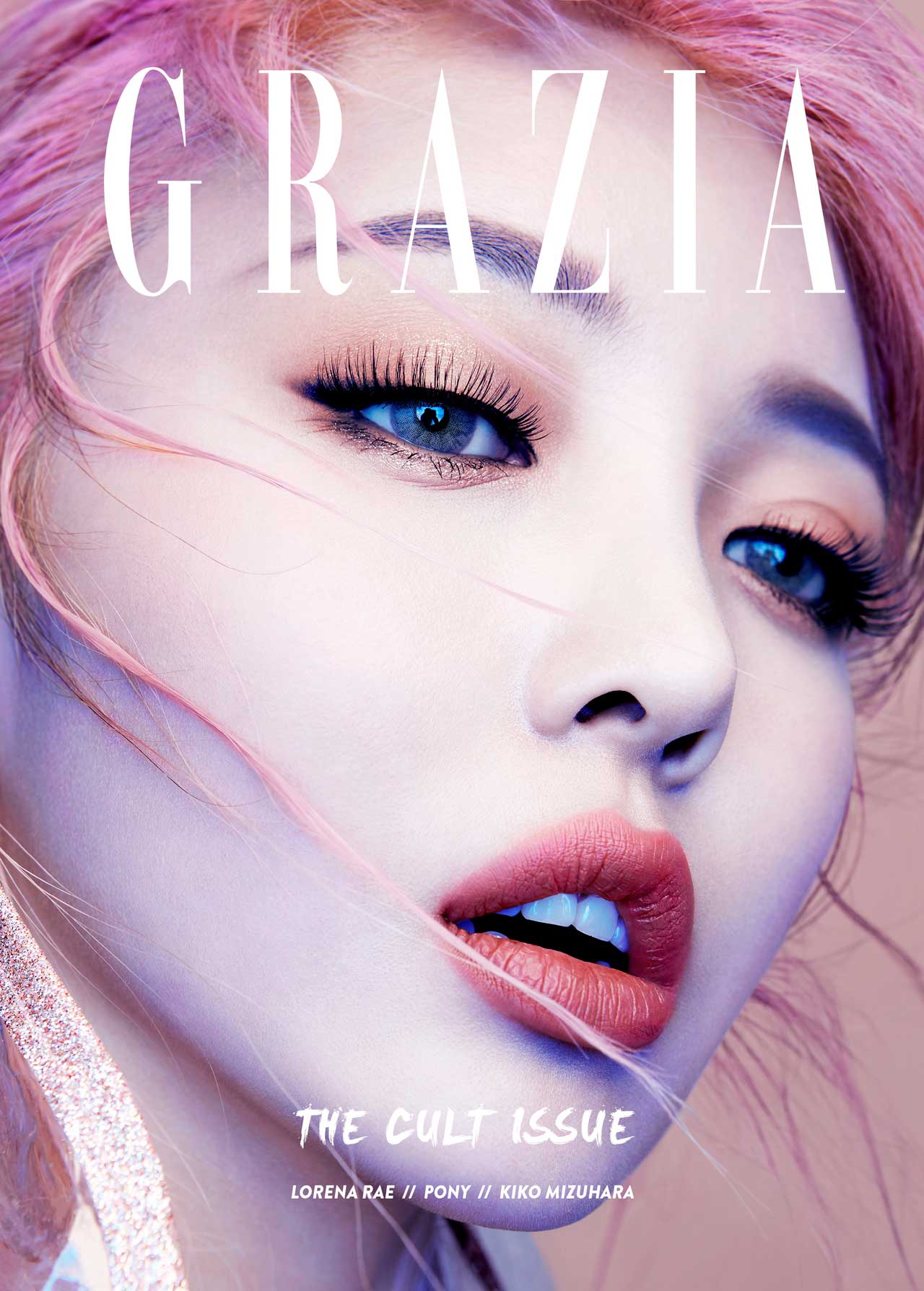News feed
In 2016, during one particularly famous episode of Korean reality show Running Man, the camera follows Song Ji-hyo (one of its raven-haired, porcelain-skinned stars) on a morning before she has had time to apply her makeup. Unexpectedly fresh-faced, she bashfully quips to the camera about not being “done”. She points out the “bags” under her eyes and protests the camera’s advances by covering her face. Nothing particularly ground-breaking, but for South Korean audiences this raw documenting was especially shocking. How could they televise an actress without her maquillage? – a sensation that made national news. South Korea’s new-era obsession with beauty perfection can be attributed to a few major factors. Western pop influence, the social and political climate, the fight against ‘polluaging’ (a Korean buzz word to describe a unique type of pollution-induced ageing) and the rise of a big-time beauty industry.
South Korean makeup is somewhat of a phenomenon in itself. The nation is responsible for some of the most unique and experimental product ingredients in the world (bee venom, snail slime, starfish extract, to name a few) and they were the creators of BB and CC creams, the new-wave foundations that went gangbusters globally a few years back. Korean skincare and makeup have a distinct focus on hydration and nourishing the skin. Culturally, they are not sun worshippers, so their bestselling products are revolutionary for pale tones and resisting pigmentation. However, K-Beauty (as it’s referred to) is not only industry rich, but also has created a generation of women (and often men) who have developed a preoccupation with drastically altering their appearance. What began as a way to accessorise one’s image has raged into an innate, intense desire to transform.
Hye-Min Park, better known as PONY, could be described as the billboard girl for K-Beauty. With make-believe-esque marshmallow skin, bubblegum-coloured hair and plump, pillowy lips, PONY is to Korean beauty vlogging what Beyoncé is to the American music charts. The 28-year-old former graphic designer is a beauty superstar in her home nation, with a following quickly growing around the world. Upon meeting her in a Tokyo skyscraper on a sweltering summer afternoon last year, I found her sweet and measured and with an unnerving state of perfection. No pore is unpolished, no facial line is apparent. In fact, she looks so fascinatingly airbrushed I can barely take my eyes off her. Like many other beauty stars, Park first became famous via her makeup application video series. Not only did her tutorials (first appearing on Korean social network Cyworld in 2008) offer sage day-to-day advice for meticulous like-minded subscribers, they also included need-to-be-seen- to-be-believed celebrity-inspired transformations. In one that has now tallied more than 6.5 million views, Park, through the magic of makeup and the masterful skill of her brushes, becomes Kylie Jenner. It’s a mesmerising, time-lapsed piece of instructional performance art complete with replaced eyebrows, overfilled lip-lines and signature “Kontouring”. It’s clear this girl knows her way around an eyeliner, and a foundation sponge, and an eyebrow pencil. I can only assume her six million Instagram followers concur.

While deep into my second hour of PONY-Tube, I start to realise why she commands the fandom she does. Not only is Park a supremely talented makeup artist, but she also mindfully taps into her audience’s very personal plight to constantly improve themselves. South Korea’s macro appeal for K-Beauty (alongside its music offering K-Pop) is a fascinating display of displaced attention. This is a nation that borders with the world’s most volatile militarised dictatorship – North Korea – and has been of global interest in recent months in its quest to settle a long- held stalemate with its northern neighbour. It also has close to one of the worst air quality levels in the world, given its proximity to China’s industrial activity, its outdated coal-burning power plants and an overpopulated road system. Just last month, South Korea’s president proposed an artificial rain project in an attempt to combat the escalating levels of fine dust particles in the air. So poor is the breathability right now that more residents than ever have taken to wearing masks to commute through the smog. It seems, though, the more that socioeconomic and environmental factors tighten their grip on the nation, the more the millennial generation takes paradisiacal respite in the fantastic world of makeup make-believe. So, in that sense, never has there been a better time to forge a career in the superfluous world of topical aesthetics.

PONY’s following can’t be just deemed “popularity”; it’s closer to an obsessive, hysterical pandemonium. I know, because I saw it first-hand. For this public appearance in downtown Tokyo there are lines of hundreds of patient disciples snaking around streets, all desperate for a glimpse of their hero. Some of them are crying. One runs past me, trying to selfie while sobbing, another is rehearsing her questions. This is a Beatles experience for the YouTube generation. Her frenzied publicist ushers me through the (very attractive and heavily pink-haired) anarchy, past burly bodyguards and beyond a large number of minders. Once inside, the cotton-candy-haired ingénue waves and softly squeaks an English “Hello” in my direction. I feel my hands get clammy and my heart race, the atmosphere is clearly contagious. Unfortunately, however, what I’d hoped might turn into a burgeoning beauty friendship (I’d already imagined our first co-tutorial) was dashed when I realised we’d be talking through a translator. Park doesn’t speak a word of English, well, besides “hello”.
In a bubbly Korean timbre, Park proceeds to take me through her latest beauty discoveries. As she talks, I’m instantly reminded of “Aegyo”. Aegyo is to Korea what Kawaii is to Japan, a cultural phenomenon that conjures a form of coquettish cuteness. She is charming, coy and, above all else, cute. Hmm, have I begun to catch this “PONY Syndrome” her followers talk about? The catch call that is also her handle on YouTube. Personally, she is wildly private. Pseudonyms and masking her face in public (not just for the air quality) is all part and parcel of her fame (she resides with her husband, Baek Hyun-woo, who apparently helps her dye her famous hair pink, but that’s about all we know). We’re told she doesn’t like being sprung for photos in public when she’s not prepared either. I guess that makes sense when you’re famous for perfection.
A few months later, we meet again, this time in Australia, Park appearing as an international ambassador for Shiseido. The setting today is a restaurant full of professional editors, so I’m confident hysteria will be absent. But I’m ever so slightly wrong. The beauty journalists in the room are dizzily excited to meet PONY. Like me, they’ve become her followers and fans. Once again, Park is flawless in appearance. Through a translator, she brushes me up on her new makeup know-how and I madly take notes. “People use more foundation than they need! Use a thin brush to dab the product, then a separate brush just to blend.” Also “Only ever apply highlighter in natural light. Then you can easily find the natural glowing part of your face to apply a small amount.” But what about that perfect winged eyeliner? “First apply fixing powder to your makeup base so it doesn’t smudge. The Shiseido ‘4:49’ arch liner creates a sharp point that won’t smudge.” And, finally, “Eyebrows are like the roof of your face, so an eyebrow pencil is an absolute must. To balance the symmetry of your eyebrows is to balance your whole face.” There’s something poetic and guru-like listening to Park distil her gospel while flanked between an entourage of minders and bodyguards. It’s as though I’m researching a post-modern sequel to Eat, Pray, Love; Eat, Pray, Love, Beautify.

Recently, The Washington Post reported K-Beauty’s grasp on modern Korean culture has stretched to children as young as six. That the social pressure of beautification has reached a point where mothers are teaching their daughters how to apply makeup for preschool. There are seven-year-olds with their own YouTube tutorial channels spruiking Hello Kitty beauty kits and attracting north of four million views. Perhaps it’s reactionary to the modern global atmosphere, or perhaps it’s ingrained (Korean kings kept heavily made-up concubines during the Joseon dynasty somewhere around the year 1390). But, more likely, it’s an Instagram-era gravitation to Western culture.
Alongside its devoted and burgeoning K-Pop industry, South Korea’s specific kind of escapist beauty bleeds into a Hollywood-written narrative of nip-tucks, anti-ageing and facial transformations. After all, South Korea now boasts one of the highest rates of plastic surgery in the world. PONY is a poster-girl player for this movement, but it must be said that her trendsetting is overwhelmingly harmless. Her tips and tricks for makeup are nothing less than sensational and are genuinely fun to try at home. This PONY Syndrome, it seems, is indeed contagious. I’m guessing primary symptoms include writing an article at home on the couch in a full-winged eyeliner, a blended apricot eye, perfectly symmetrical brows and some deliciously highlighted cheekbones.
SEE THE FULL FASHION SHOOT HERE.

FASHION DIRECTION: AILEEN MARR
MAKEUP: PONY USING SHISEIDO & PONY EFFECT










